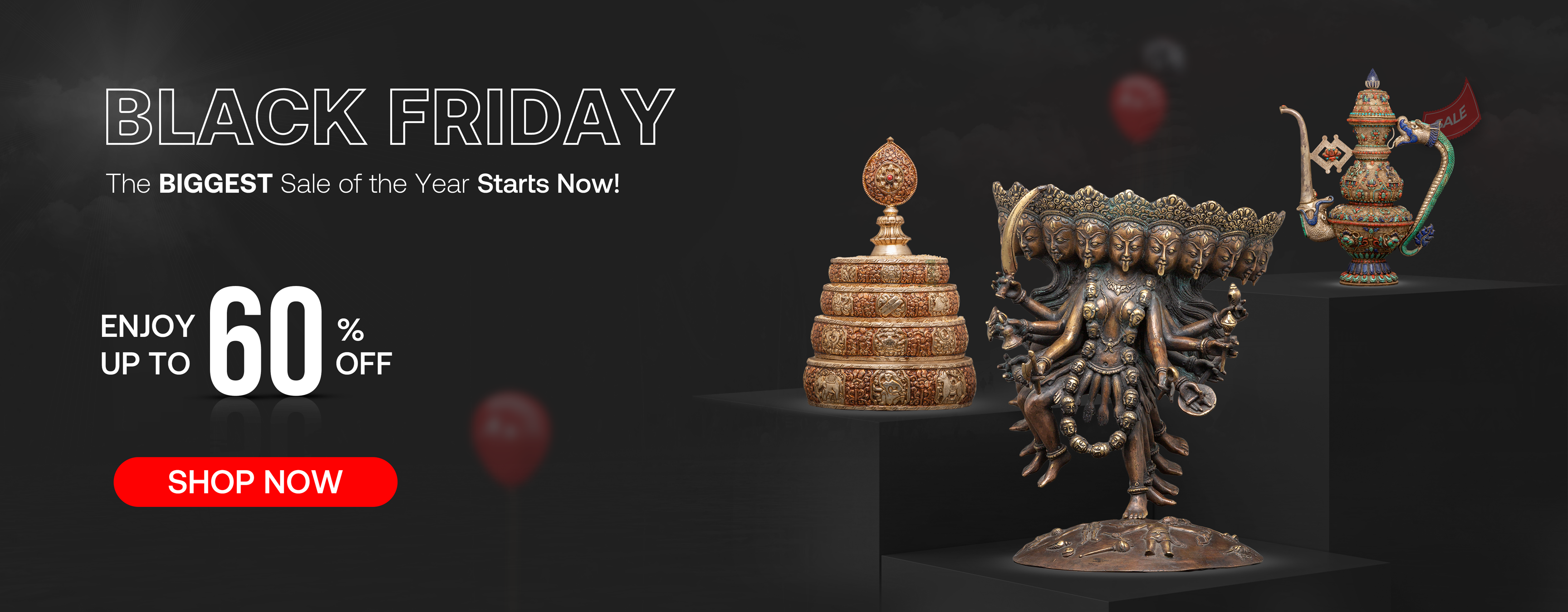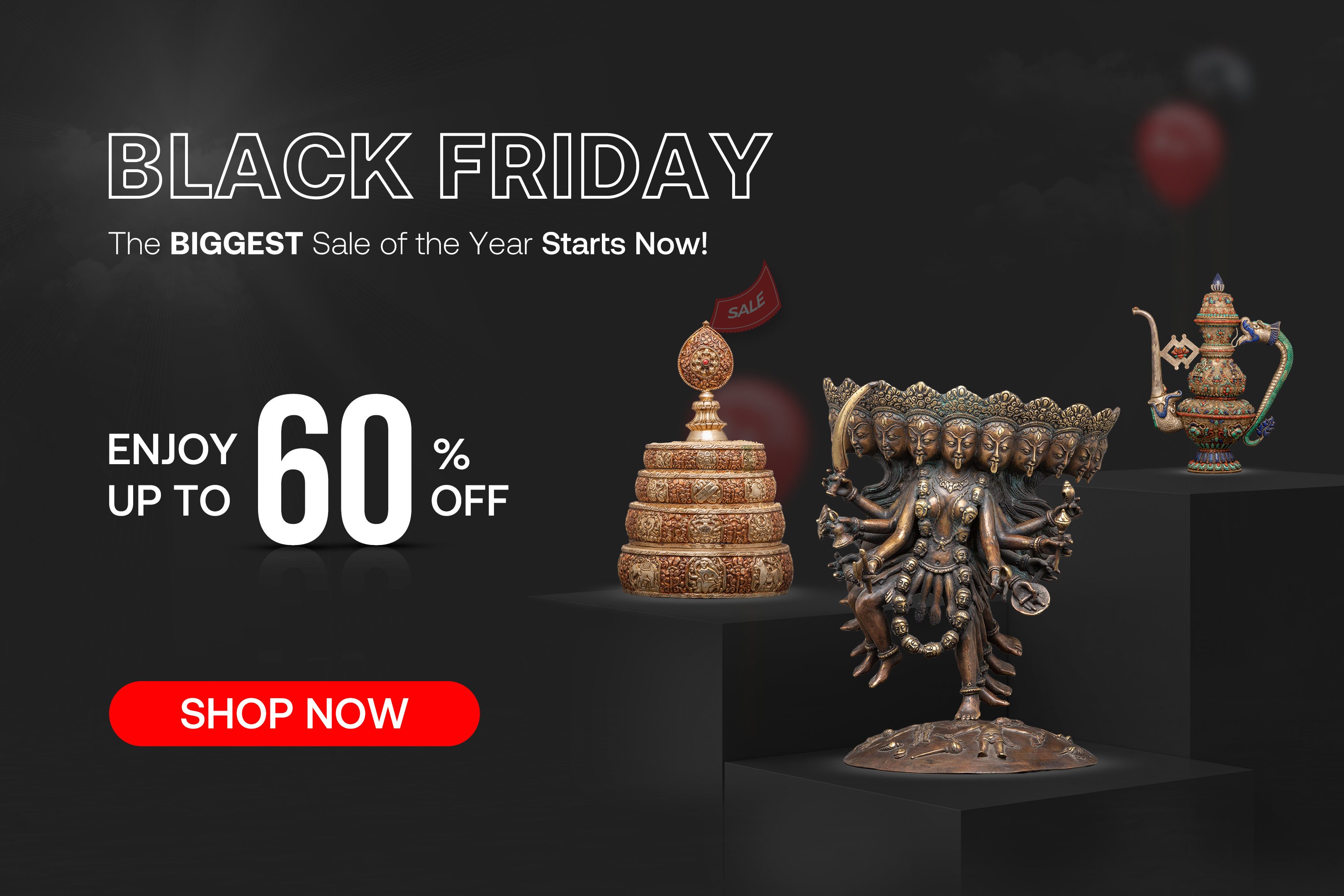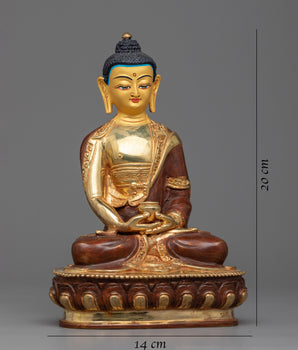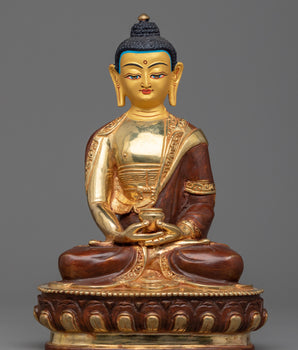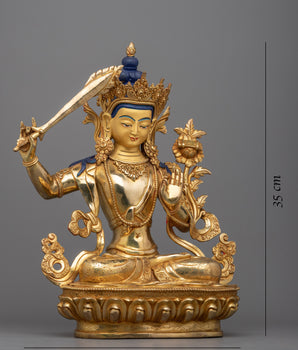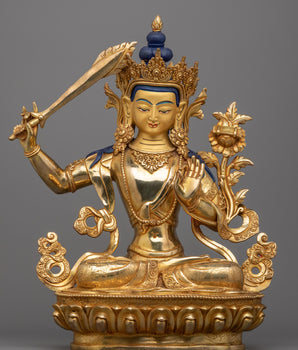A Simple Guide to the Symbols of Wrathful Deities in Tantric Buddhism
In the mysterious world of Vajrayana Buddhism, the difference between terror and transcendence is sometimes not clearly defined. The awe-inspiring forms of wrathful deities, fierce protectors, and manifestations of enlightened energy can be seen nowhere other than in Tibet. These deities look frightening, shrouded in flames, they are decorated with garlands of skulls; however, behind the flashes of their external rage hides a caring, compassionate goal.
The bone ornaments they wear are one of the garnish features of their iconography. Quite the opposite of horrific decorations, these decorations are full of symbolism, impermanence, fearlessness, and spiritual transformations.
Wrathful Deities: Fierce Faces of Compassion

Wrathful divinities in Vajrayana Buddhism, such as Mahakala, Yamantaka, Vajrapaṇi, and Heruka, are not evil spirits, but are enlightened beings that, out of deep compassion, assume these fierce forms. Their anger relies on wisdom and burning compassion, not hatred and violence. Their form has a spiritual use, stunning the practitioner from complacency, devastating mental and emotional illnesses, which block the view of true nature.
In the tantric practice of Buddhism, they protect the Dharma and the awakening path from threats exterior and interior, respectively. Their facial expressions symbolize continuous focus and intent, their flames symbolize the blaze of pure awareness, and their mudras, ritual wisdom, and burning compassion are the transformational gears that are responsible for releasing the mind from habitual formations. The wrathful deities represent “the wrathful compassion” of the awakened mind; the need to shock, break through long-held pain.
Ritual in Vajrayana Buddhism
In Vajrayana, ritual is not a form of show, and it is a mystical reenacting of inner change. Bone ornaments, while used in the rituals and meditations, can not only be seen, but can also be applied. They are living lessons to inform the wearer that nothing is permanent, not to be afraid of anything, and that one can transcend anything. Such rituals call the symbolic power of the ornaments into action, which converts meditation into the multi-sensory activity of channeling the energies of the wrathful deities. All motion, all visualization, and all chanting are made into a sacred act as they harmonize body, speech, and mind with enlightened awareness. By undergoing ritual, the practitioner assimilates into, or takes on, the form of the deity, its energy, and purpose, to cut through ego and illusion.
The Five Bone Ornaments in Tantric Buddhism

Wrathful deities are often depicted with garlands and ornaments made from human bones. The Five Bone Ornaments (Sanskrit: aṣṭhi-māla) are strong symbols of metamorphosis and ephemerality as well as spiritual strength, instead of being disgusting or destructive.
These ornaments, made out of bones found in charnel grounds where decayed bodies are left to decay in the open air, serve as morbid reminders of death and transience. They, however, are also symbols of freedom in Tantric Buddhism, a sign of the transformation of the mundane impurities into the luminescent qualities of illumination.
Each of the five ornaments has a separate symbolic purpose and connotation.
1. Bone Crown (Five Skull Crown)

- The ornate headpiece consists of a black and red crown construction decorated with five small skull motifs, which were arranged around the crown.
- Represents the transformation of the Five Poisons into the Five Wisdoms.
2. Bone Earrings

- Two hanging pieces, not very complicated, yet very elegant, were made with beads and small skull motifs.
- Show readiness to the Dharma and the sufferings of beings.
3. Bone Necklace (Garland of Skulls)

- Large beaded necklace in a round shape with skull motifs.
- Represents speech purification, one of the main practices in Vajrayana (e.g., mantra recitation).
4. Bone Bracelets and Armlets

- Numerous red-backed pieces in the shape of rectangles with white beadwork.
- Signifies illuminated action and loving participation, and includes the combination of wisdom and activity.
5. Bone Apron or Girdle

- A netted skirt-like section decorated with complex beading and skulls, and connected to a wide band.
- Represents the foundation of energy and establishes relations with the karmic reality.
Symbolism of Bone In Buddhism
Buddhist tantra symbolism draws on bones to help one confront the deepest truths of life as powerful spiritual tools. The bones represent the eternal truth at the backdrop of the ever-changing appearance of the forms; their decoration by wrathful deities represents the fleeting nature of clinging to the form. These gods adorn death with dignity and strength to represent transcending the layers of existence and incorporating death into their realm. This acceptance of mortality is the freedom from the ego and fear, which leads practitioners to embrace it with clarity and compassion. The bone symbolizes not only death but also transformation, for the poisons of the mind can be broken and transformed into wisdom. These deities indicate that even dreadful experiences and phobias can be a triggering factor for realization.
The tantric bone symbolism is not a halfway house, but it is also not a hammer, but an invitation to self-discovery, even to the point of defying our fears, and the incredible clarity that lies beyond fear exposes the freedom, wisdom, and fearlessness of the awakened mind.
Sacred Symbols Born of Death

In Vajrayana Buddhism, often, spiritual exercise entails dealing with death and decay, and impermanence. Historically made from actual human bones, bone ornaments were used in the conversion of raw material from death into sacred ritual objects. These ornaments adorn during meditation, and the process of the ceremonial practice serves as a reminder of impermanence, non-attachment, and the transformational practice of Tantra.
The situation currently is that most of the bone ornaments are manufactured from alternative materials such as metal, wood, and especially ivory, but they have maintained their symbolic power.
Advanced tantric practitioners may even use bone ornaments at certain tantric activities, such as the Chod ritual, where they do a meditative offering of body to ghosts, demons, or the hungry. This ritual enhances the idea that there is ultimate non-attachment and that self-centered views should be dropped. The journey from the charnel ground to the sacred ground is on many planes, physical and spiritual, a journey from degeneration to insight, from death to awakening, and from fear to fearless compassion.
Who Wears Bone Ornaments?
Advanced Vajrayana practitioners still wear bone ornaments, in particular, during empowerments, tantric rituals, and Chod practices. Monks, nuns, and yogis could wear this symbolic apparel to reify the deity in ceremonies. Another example of wearing bones in Tibetan culture is that of cham dancers, monastic performers, who use masked dance to activate a spiritual ritual; they use bone ornaments which represent wrathful deities and guardian spirits. These performances conducted in monasteries or public festivals provide blessings as well as visual teaching to the community. By these practices, the ornaments connect what is old with the living, onward transcending a lineage of compassion through fierce clarity.
Chod practices

(Photo From Suvaco bhikkhu thailand)
The practice of transformation of the self to sacred feast through hosting the spirits, demons, and opposing forces is known as chod, a Vajrayana Buddhist practice. This ritual visualization method was developed by an 11th-century yogini, Machig Labdron, which entails a practitioner giving his/her body as food, cutting his/her pride and ego, and conquering his/her fear of dying. Performers usually practice Chod in remote places where they have the courage and ability to speak to their fear by offering their bodies as sustenance. Because of fear, this move helps to develop empathy and transparency, and makes the situation clear. The association with death and impermanence gets reinforced by measures like chanting, the use of bone ornaments, and the doing of rituals such as the damaru (two-headed drum). Chod is a dynamic way of liberation from fear.
Bone Ornaments in The Modern World
Nowadays, bone ornaments are no longer produced from human bones but are produced from ethical materials such as wood, metal, resin, or replicas, leaving their symbolic meaning intact, while adhering to the modern world’s values. These ornaments are then also the subjects of study in courses such as religious studies and anthropology, and are also present in renowned museums such as the Rubin Museum of Art, the British Museum, and LACMA. They are not only here as artifacts, but also as ardent symbols of change and impermanence.
In rituals, temple ceremonies, and cultural performances, bone ornaments still bring practitioners and audiences to the timeless wisdom of Tantric Buddhism; reminders of death conquered and the sacred from the material.
Conclusion: Accepting Wisdom's Fierce Grace
In Vajrayana Buddhism, bone ornaments and wrathful deities denote courageous compassion as opposed to fear. They are living tools for change and not mere relics belonging to old ritualized practices. Practitioners can connect to the sacred energies of awakened awareness, shedding the ego and accepting mortality when wearing bones. These symbols, be it embedded in the temple rites or even in cultural dances and exhibits in museums, will force us to see beyond outward expressions and recognize the springboard of death to wisdom, rather than its end. We are drawn into a deeper world through the savage faces of these deities and ornaments made from human bones that they wear. The fact that freedom lies in the transformation of fear, not the avoidance of it.





